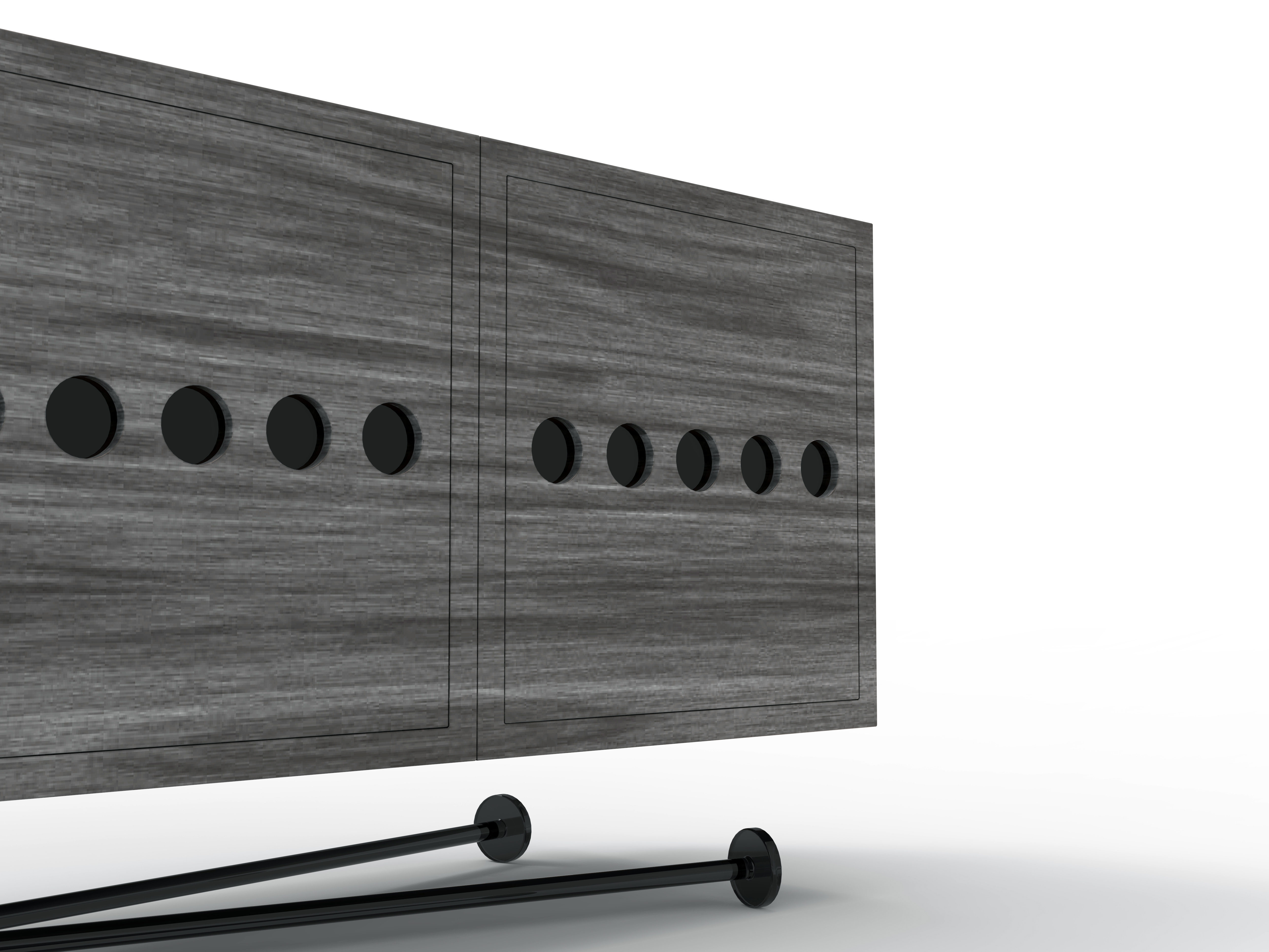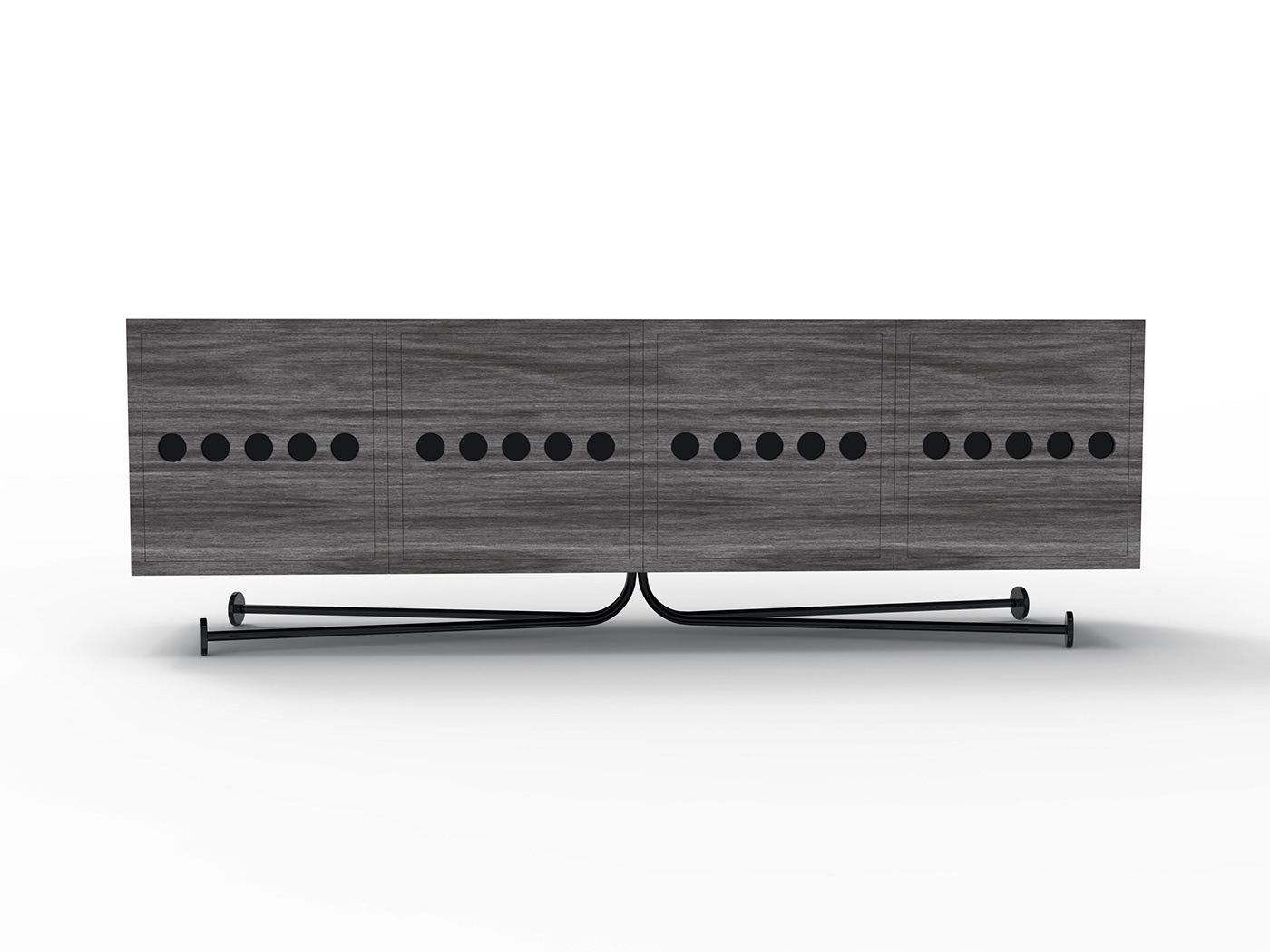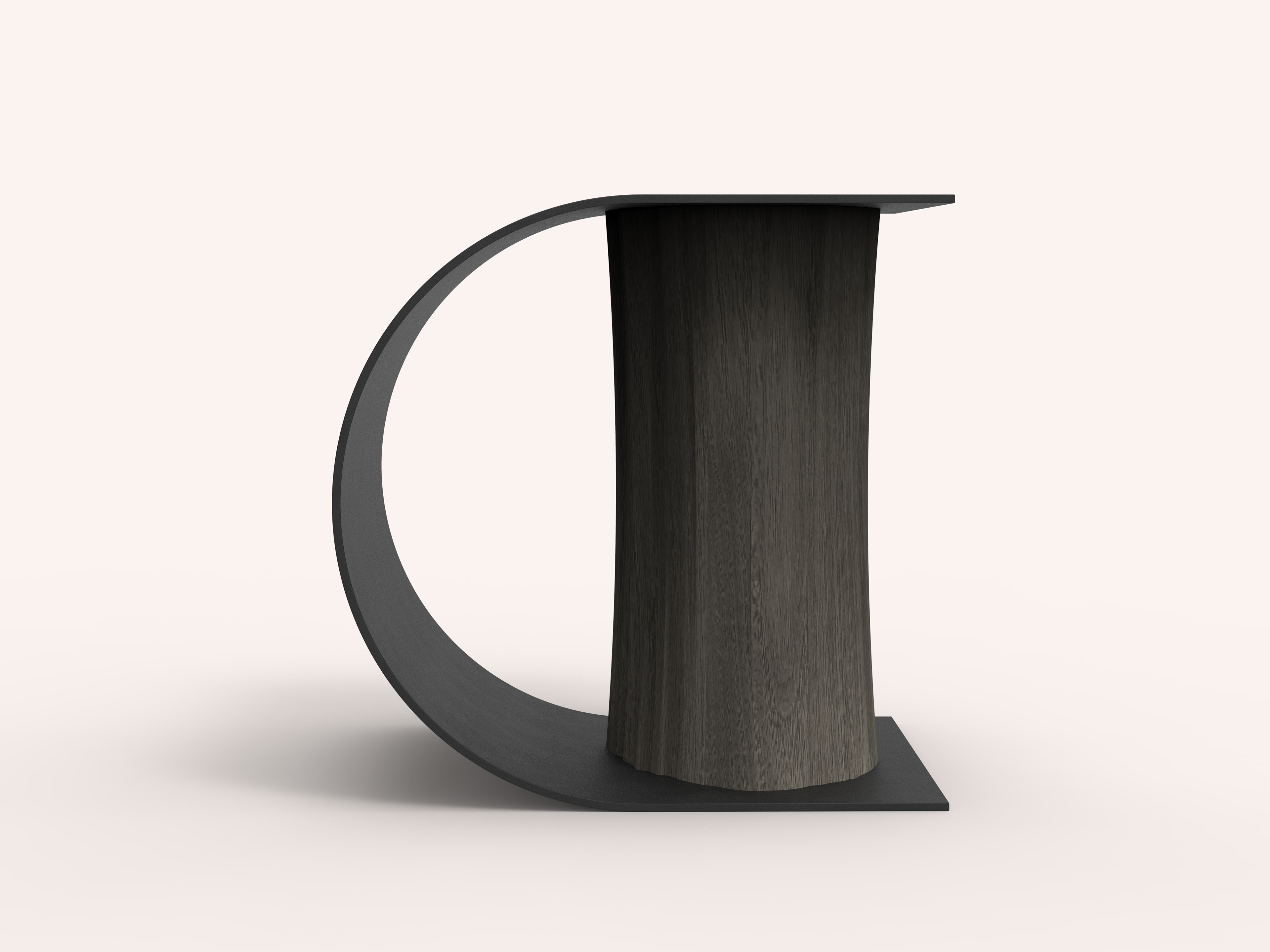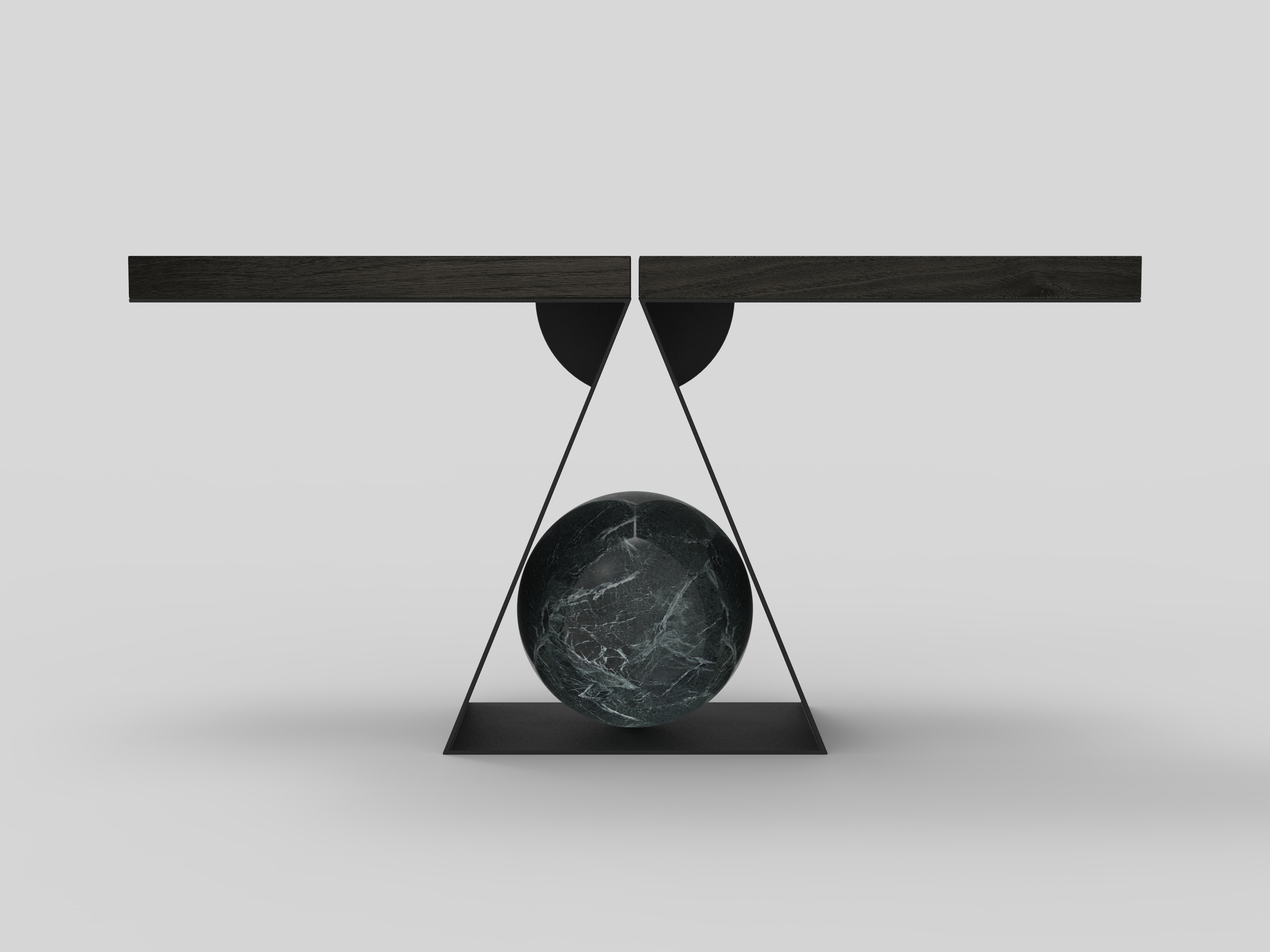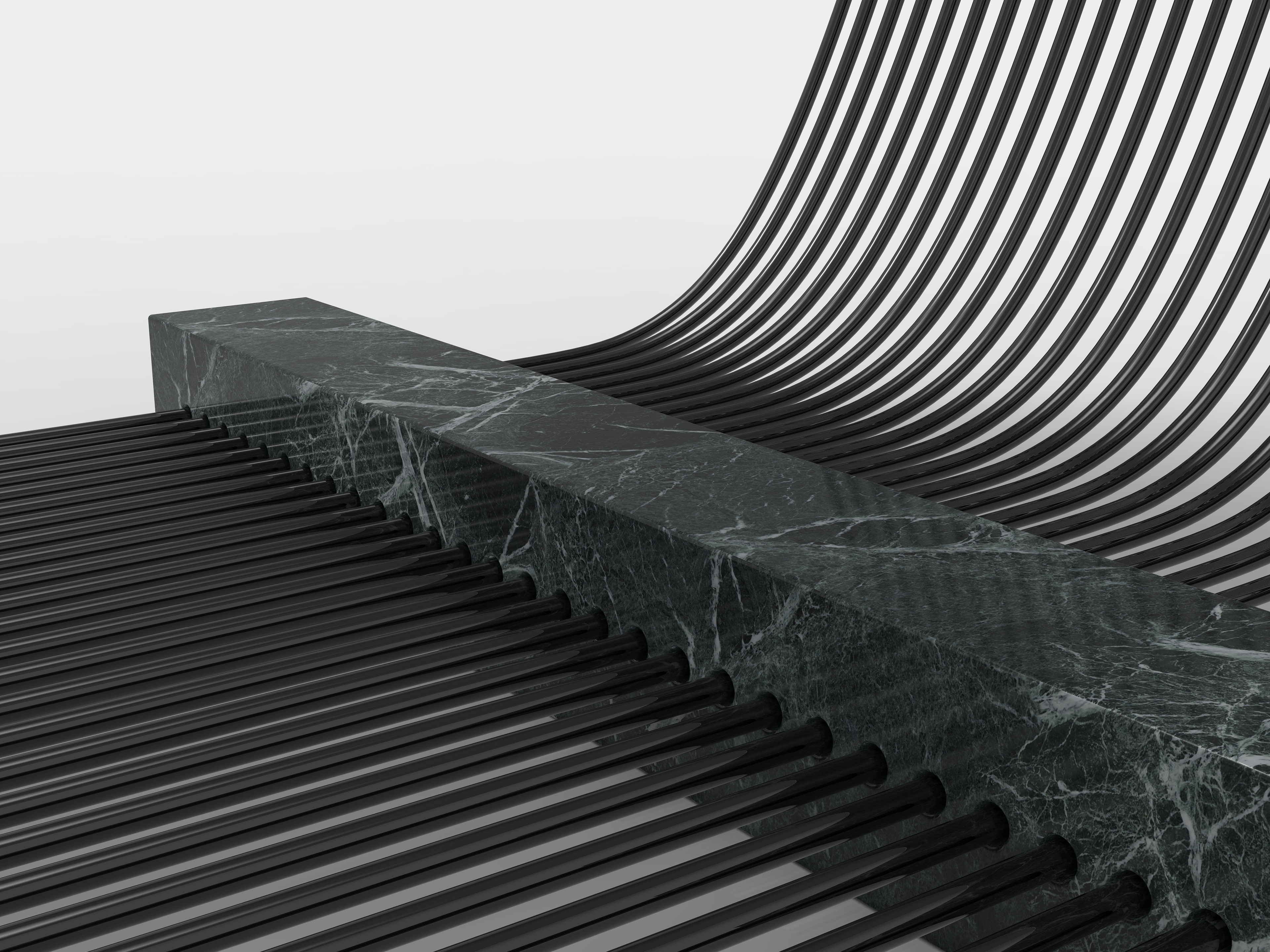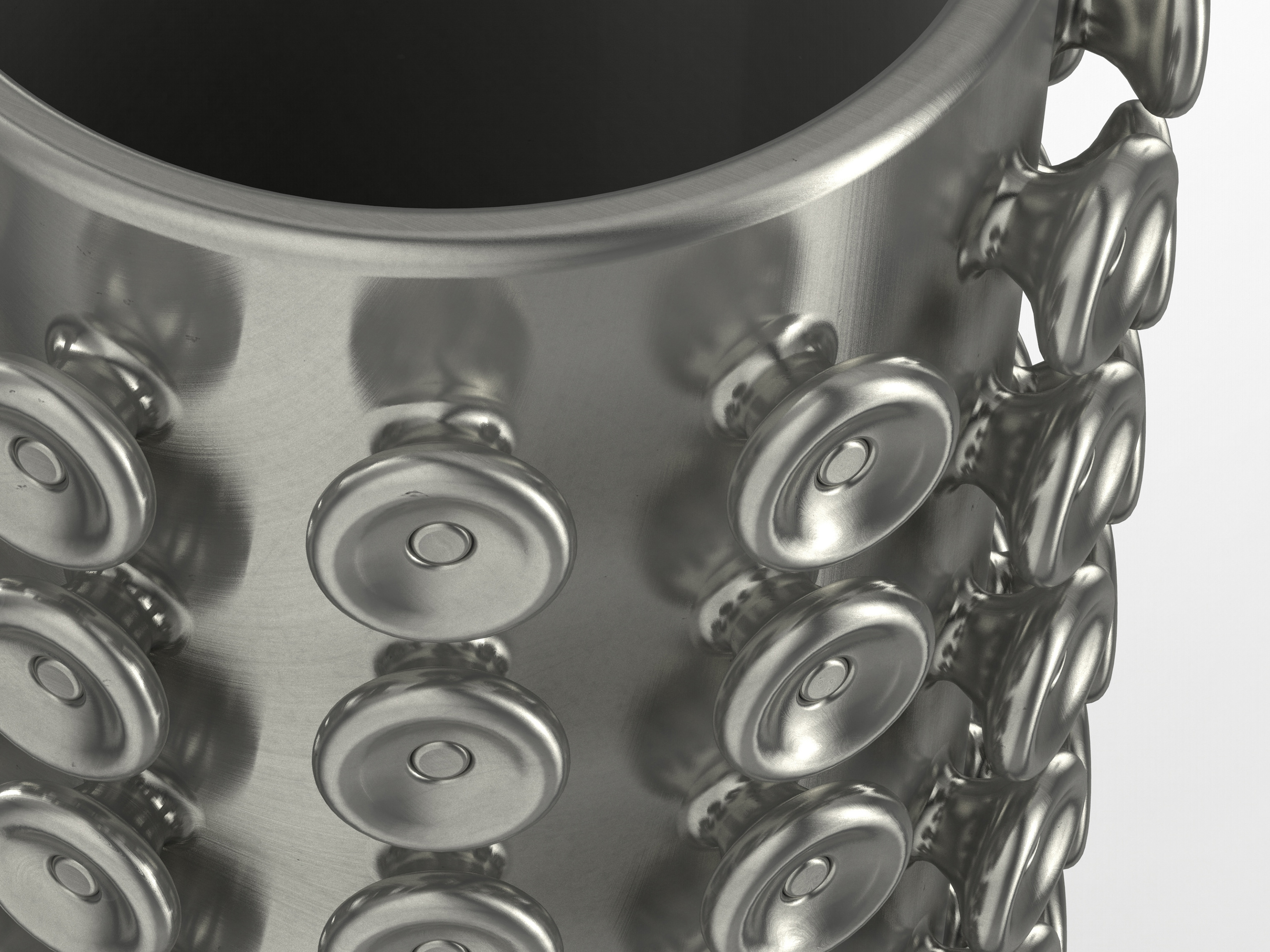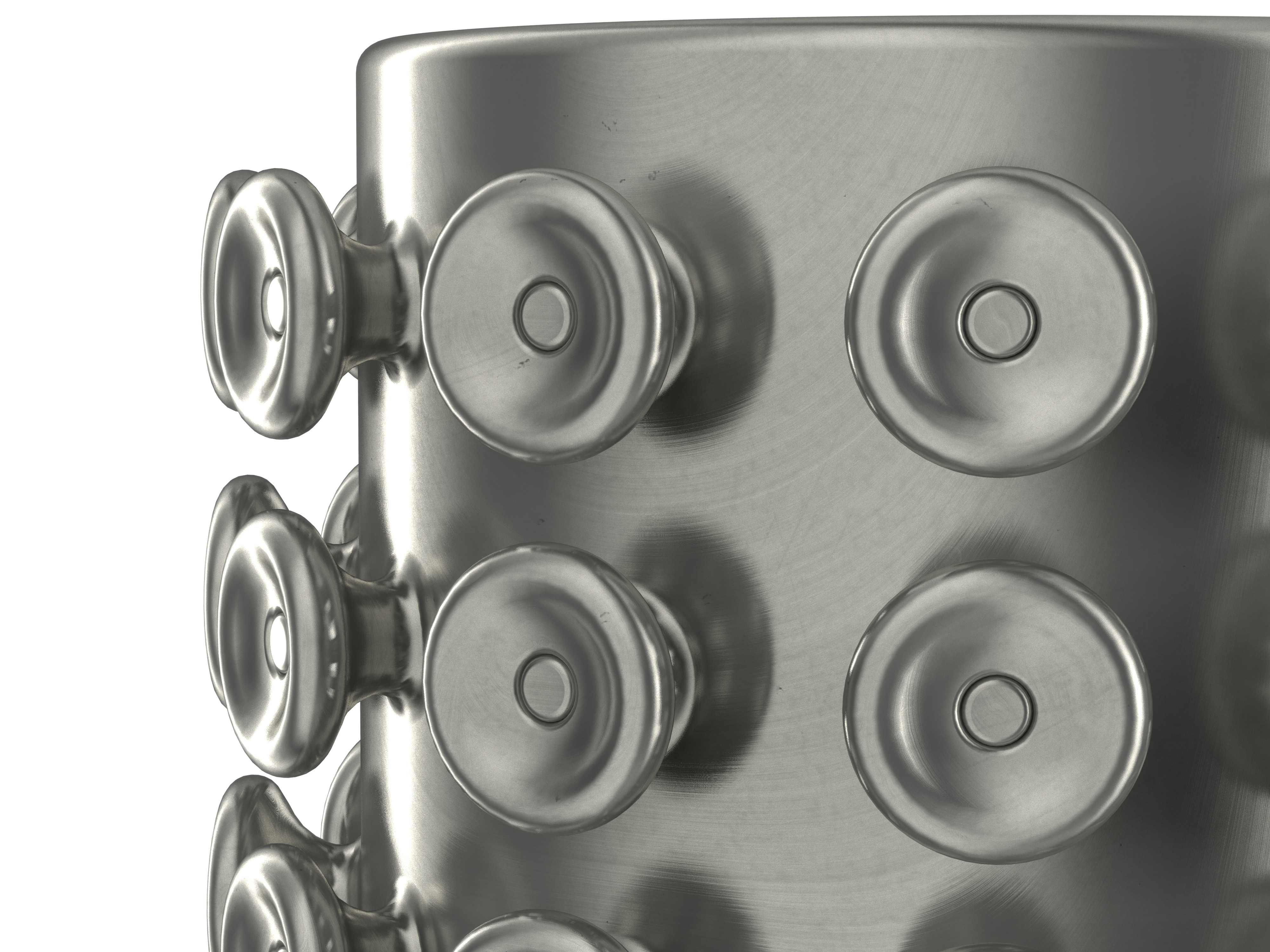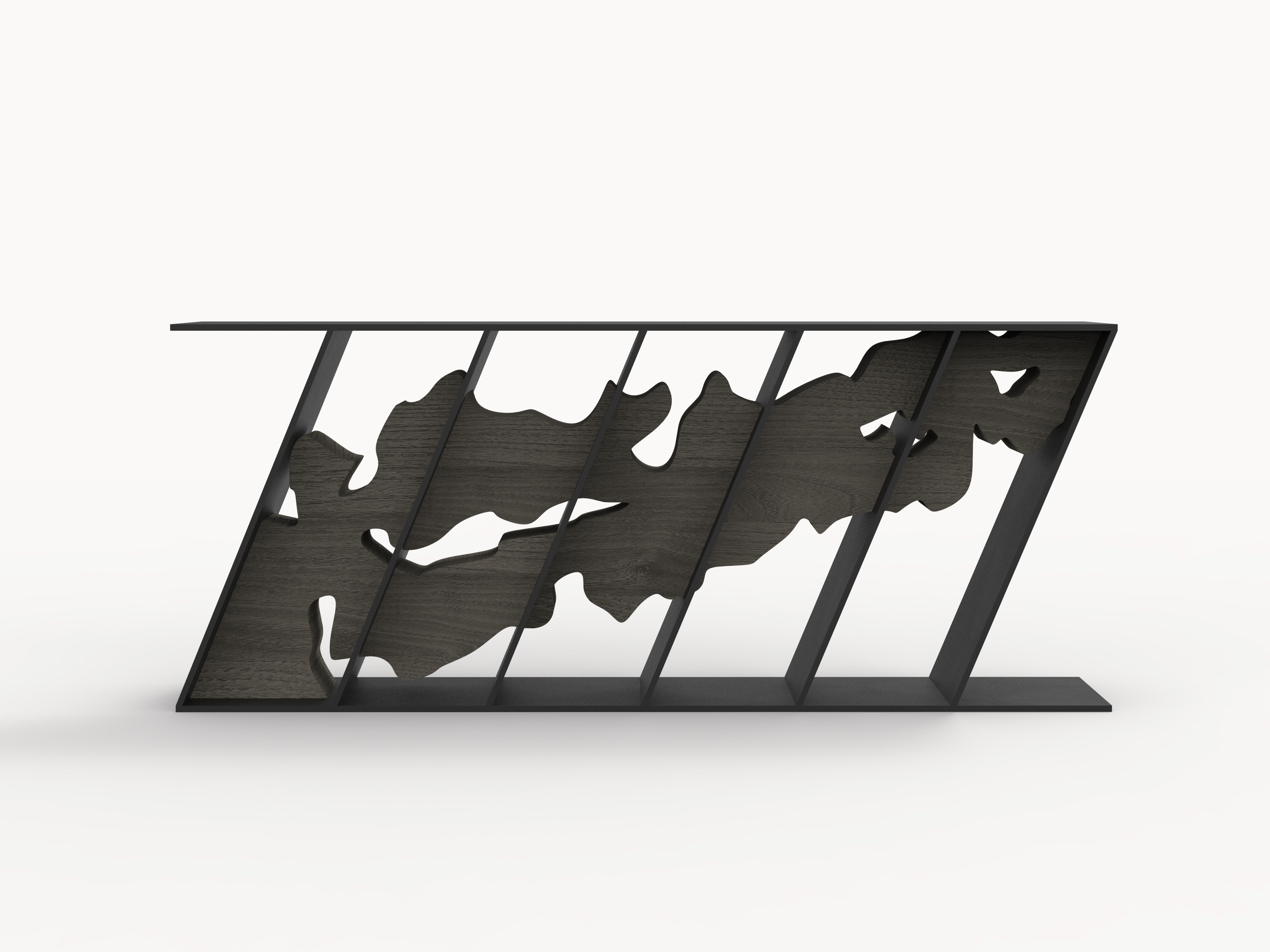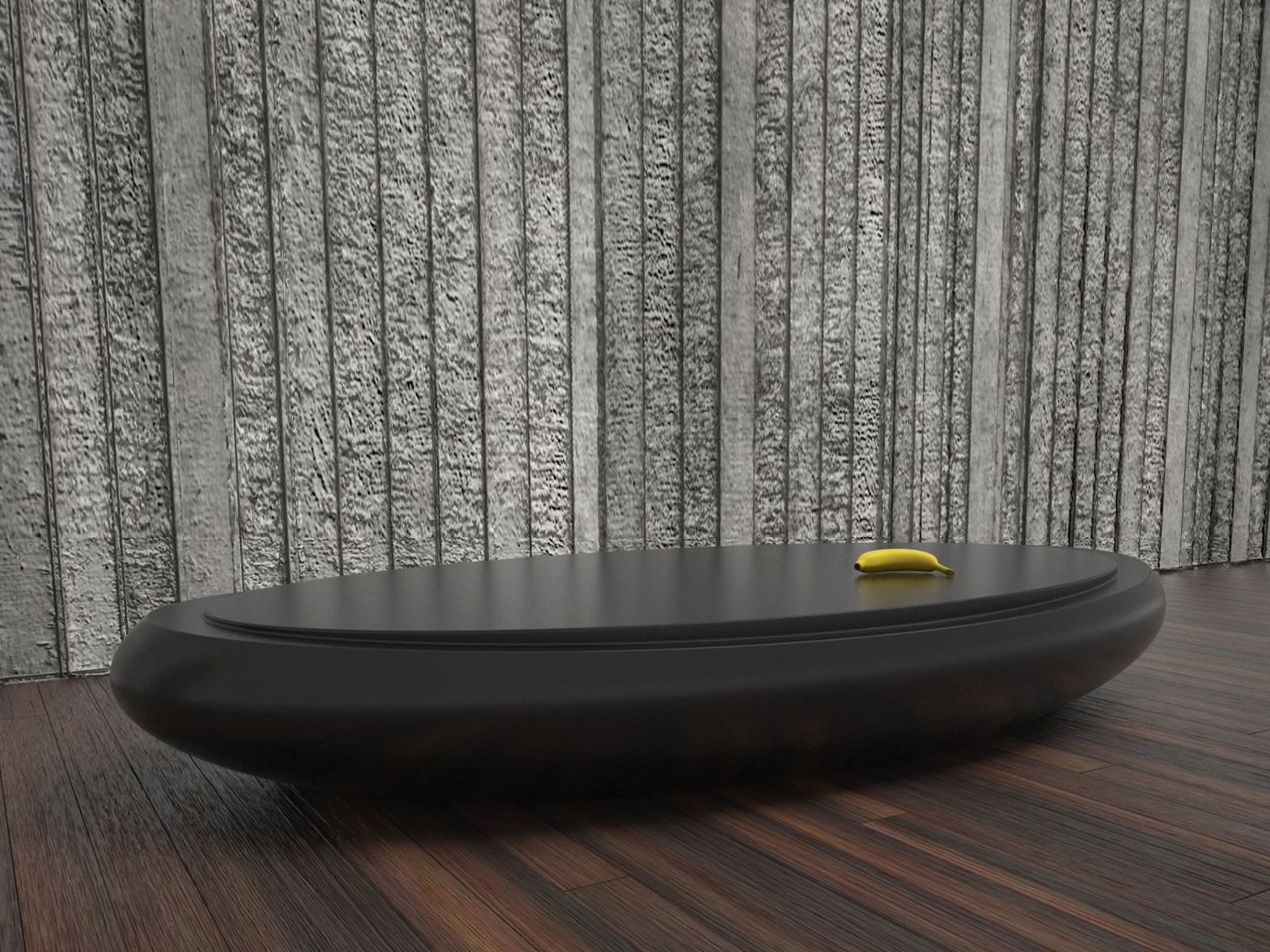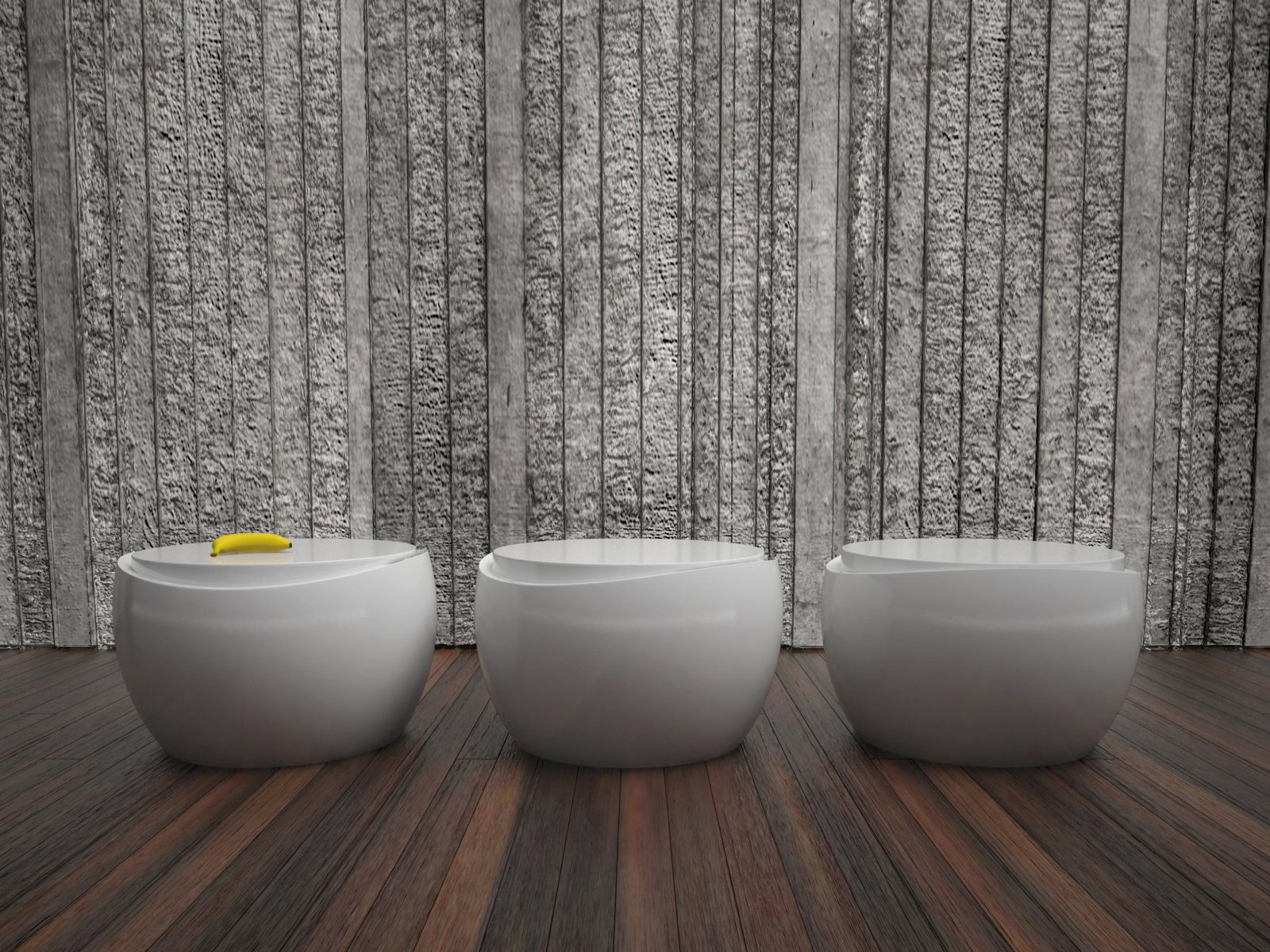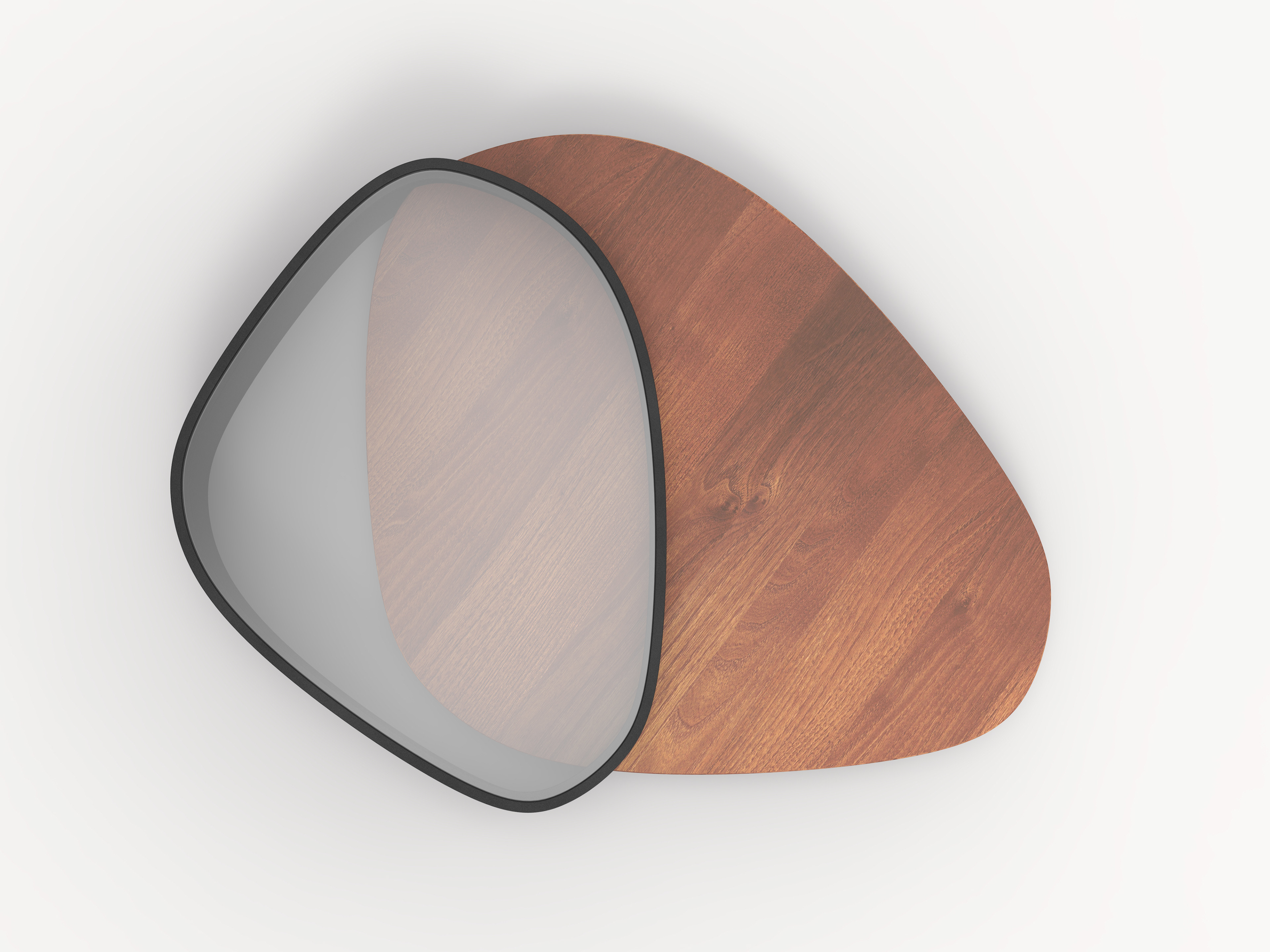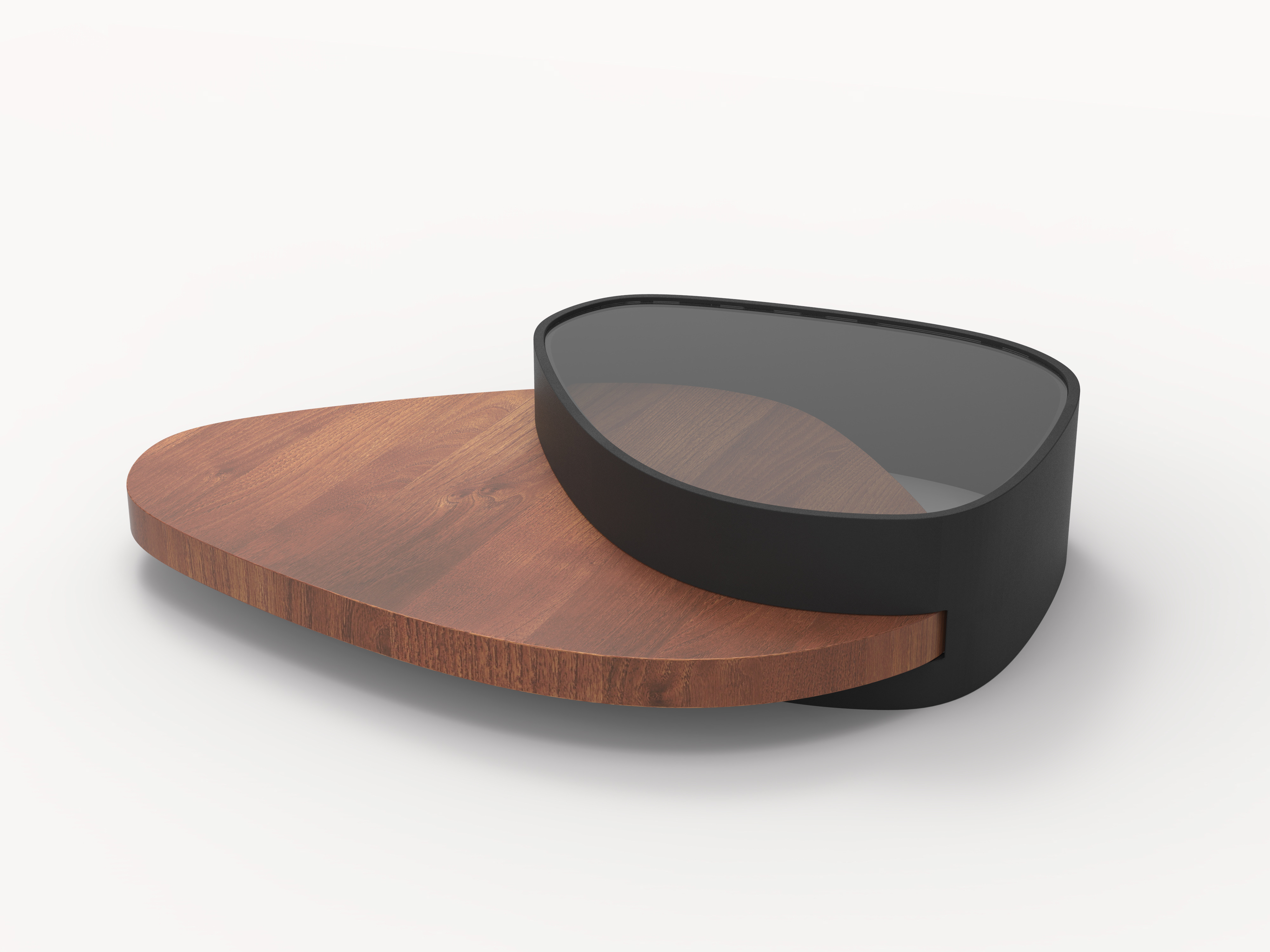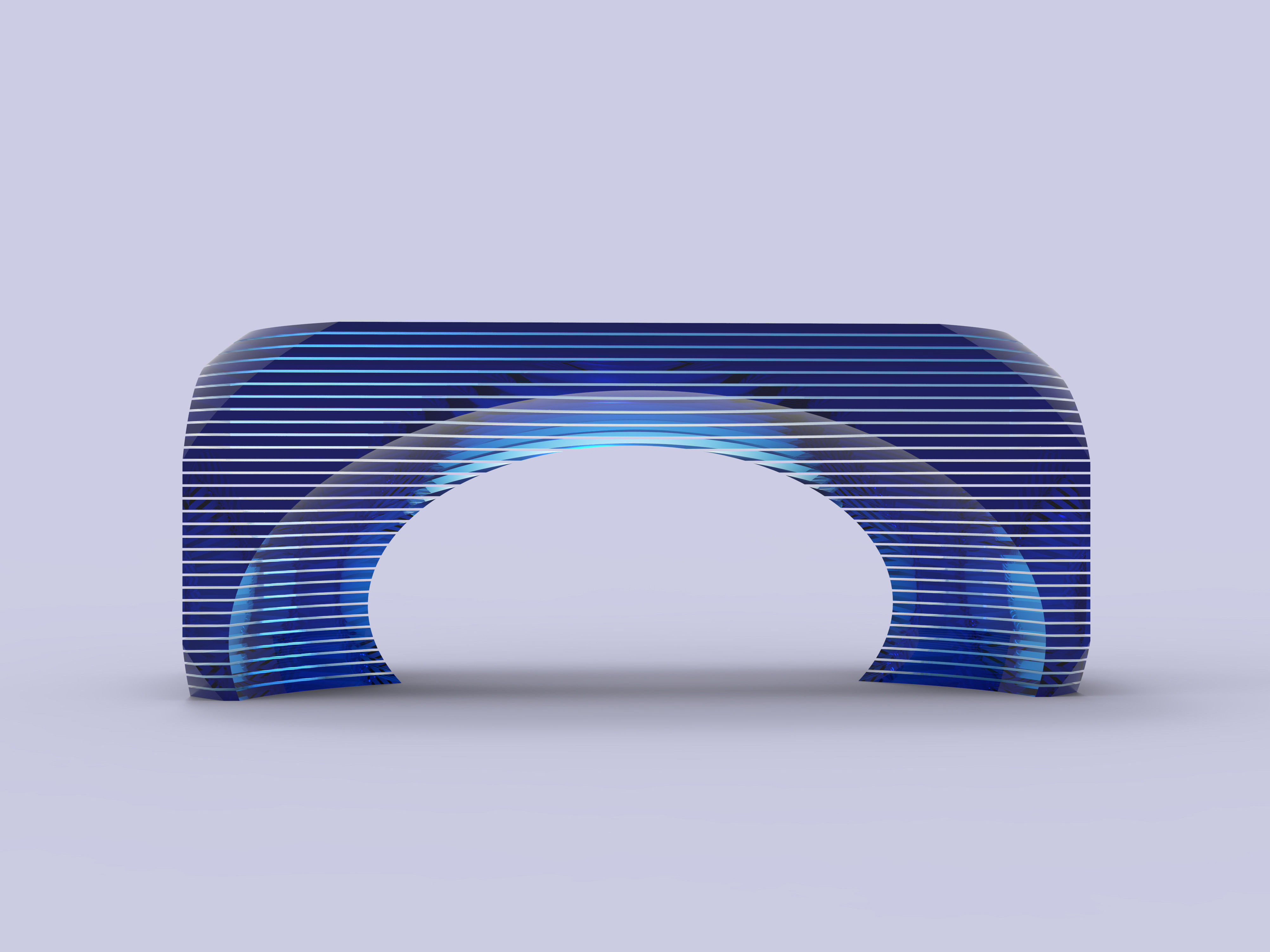GOLDEN TRIANGLE
The Golden Triangle is a particular type of isosceles triangle. Any isosceles triangle has two equal sides and two equal angles. In the case of the Golden Triangle, the two equal angles are 72 degrees, and the apex angle is 36 degrees. Everything in geometry returns to the golden ratio, 1:Φ (or "phi," approximately 1.618). This ratio is found in some patterns in nature and is how many artists have composed their works. The origin of the ratio is unclear and some have found it dates back to the ancient Egyptians and the construction of their pyramids. During the 5th Century BC, Egyptian mathematician Euclid studied and obsessed over these proportions. It was ultimately popularized by Italian mathematician Fra Luca Bartolomeo de Pacioli in the 15th Century. Considered the Father of Accounting and Bookkeeping, he was a contemporary of Leonardo Da Vinci. This ratio is often referred to as the Fibonacci Sequence in nature. This coffee table is made from welded and powder-coated steel with an inset of smoked black glass. The shadow effect gives the table a minimalist appeal, but other color combinations will inspire different moods.

